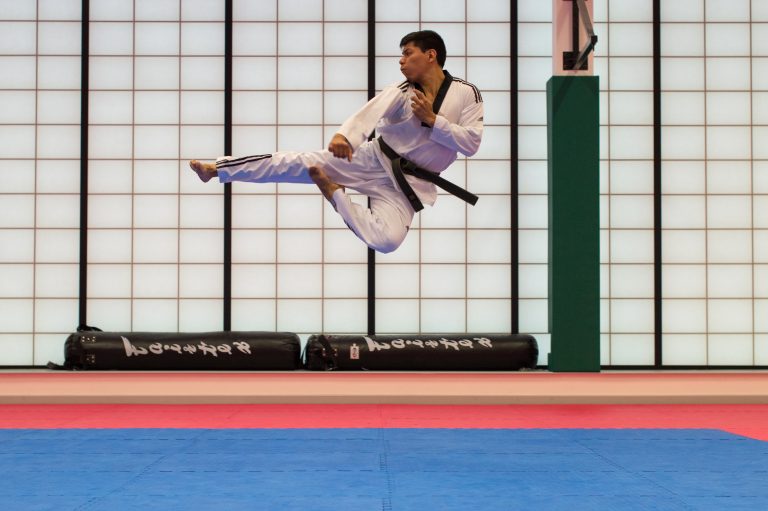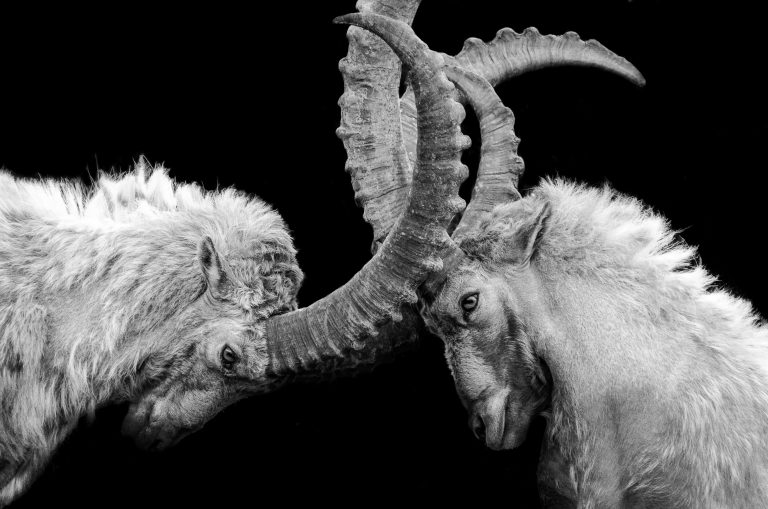Shotokan Karate Belt Colors in Order: A Complete Guide
Shotokan Karate is one of the most popular forms of martial arts in the world, and it has a detailed ranking system that uses different colored belts to indicate a student’s level of mastery. Belt colors are an essential aspect of Shotokan Karate. They are used to indicate progress and show the various levels of skill and expertise in a specific area. In this blog post, we will discuss the Shotokan Karate belt colors in order, so you know what to expect when going through the ranks.
Why are Belt Colors Important in Shotokan Karate?
The belt system is a way to keep track of a student’s progress in Shotokan Karate. It is also an excellent motivational tool because the student can see their progress and feel a sense of accomplishment as they move up in the ranks. The belt system also allows instructors to know where their students are in their training, so they can tailor their instruction to best suit the student’s abilities.
Each belt level in Shotokan Karate represents a specific set of skills, techniques, and knowledge that the student has acquired. As the student progresses through the ranks, they are expected to demonstrate a higher level of proficiency in their techniques, which typically includes more advanced techniques, greater speed, and power.
The Order of Shotokan Karate Belts
Shotokan Karate ranking system uses different colored belts to indicate a student’s level of mastery. The order of belts is as follows:
White Belt (10th Kyu):
The white belt is the starting point for a Shotokan Karate practitioner. It indicates that the student is a beginner and has not yet learned any formal techniques. The white belt symbolizes purity and innocence, as the student begins on their path to learn Shotokan Karate.
Yellow Belt (9th Kyu):
The yellow belt is the first belt that a student earns in Shotokan Karate. It indicates that the student has learned the basic techniques and has developed a basic understanding of Shotokan Karate.
Orange Belt (8th Kyu):
After the yellow belt, the next belt is the orange belt. At this level, the student has developed a more in-depth understanding of Shotokan Karate techniques, and their movements are more precise and fluid.
Green Belt (7th Kyu):
The green belt is next in line after the orange belt. It indicates that the student has gained confidence in their abilities and has a better understanding of the practical application of the techniques they have learned.
Blue Belt (6th Kyu):
The blue belt marks a significant milestone for a Shotokan Karate student. It represents that the student has a deeper understanding of the art and its techniques.
Purple Belt (5th Kyu):
The purple belt represents that the student has a higher level of proficiency in their techniques and should start teaching basic techniques to lower-level belts.
Brown Belt (4th-1st Kyu):
The brown belt is further divided into three levels: 4th Kyu, 3rd Kyu, 2nd Kyu. Finally, 1st Kyu indicates that the student is almost ready to receive their black belt. At this level, the student’s techniques are highly polished, and they have achieved a high level of proficiency in Shotokan Karate.
Black Belt (1st Dan and above):
The black belt is the final goal of a Shotokan Karate practitioner. It indicates that the student has achieved the highest level of proficiency in Shotokan Karate, and they have dedicated years of hard work and discipline to get there. The black belt system is further divided into dan grades, which indicate the level of mastery. The lowest level is 1st Dan, and the highest level is 10th Dan.
Shotokan Karate Belt Colors in Order: Answers to the Most Frequently Asked Questions
As a martial arts practitioner, you know that the progression from white to black belts represents one’s journey towards mastery. In Shotokan Karate, there are specific belt colors in a specific order that students must follow to reach the pinnacle of this martial art form. In this blog post, we will provide you with answers to the most frequently asked questions about the Shotokan Karate belt colors in order.
What are the Shotokan Karate Belt Colors in Order?
The Shotokan Karate belt colors in order from newbie to mastery are:
1. White Belt
2. Yellow Belt
3. Orange Belt
4. Green Belt
5. Blue Belt
6. Purple Belt
7. Brown Belt
8. Black Belt
What is the Meaning of Each Shotokan Karate Belt Color?
Each Shotokan Karate belt color has a specific meaning:
– White Belt: Symbolizes purity, innocence, and lack of knowledge. This is the starting point of one’s journey in martial arts.
– Yellow Belt: Symbolizes the first rays of sunlight. It signifies the beginning of a new day and the opening of one’s mind to new knowledge.
– Orange Belt: Symbolizes the growing power of the sun. It represents the student’s growing power and knowledge of martial arts.
– Green Belt: Symbolizes the growth of a seed into a plant. It represents the student’s growth in skill and power.
– Blue Belt: Symbolizes the sky, as the student’s mind expands to new horizons.
– Purple Belt: Symbolizes the breaking of dawn. It signifies a new level of achievement, skill, and knowledge.
– Brown Belt: Symbolizes the ripening of a seed. It represents the student’s maturity, with exceptional skill and knowledge.
– Black Belt: Symbolizes the darkness beyond the dawn. It signifies the highest level of achievement in martial arts – courage, leadership, and mastery.
How Long Does It Take to Get a Shotokan Karate Black Belt?
The time it takes to get a Shotokan Karate Black Belt varies depending on one’s dedication, practice, skill level, and time spent in each belt level. It typically takes between five and seven years of regular practice to achieve a Shotokan Karate Black Belt.
How Do You Progress Through the Shotokan Karate Belt System?
To progress through the Shotokan Karate belt system, students must pass tests that demonstrate their mastery of the skills required for each belt level. These tests include katas, kumite, and other techniques that are specific to each belt level. As students progress through each belt level, the tests become more challenging, and the standards for achieving each belt increase.
What Are the Benefits of Achieving a Shotokan Karate Black Belt?
Achieving a Shotokan Karate Black Belt is not just about attaining mastery in martial arts. It also has numerous personal and social benefits, some of which include:
– Improved physical health and fitness
– Increased confidence and self-esteem
– Enhanced mental and emotional strength
– Improved focus and concentration
– Self-defense skills
– Opportunities to share knowledge and teach others.
How to Understand Shotokan Karate Belt Colors in Order
Shotokan Karate is an ancient martial art that has been passed down from generation to generation. It is a discipline that involves a set of physical and mental practices aimed at improving the self-defense, health, and well-being of the practitioner. One of the essential aspects of Shotokan, and any martial art, is the belt system. Shotokan Karate has a belt system that consists of ten different colors, each representing a specific level of mastery. In this guide, we will provide you with a step-by-step guide on how to understand Shotokan Karate belt colors in order.
Step 1: Know the Basic Belt Colors
The Shotokan Karate belt colors, in order of progression from beginner to advanced, are:
1. White Belt
2. Yellow Belt
3. Orange Belt
4. Green Belt
5. Blue Belt
6. Purple Belt
7. Brown Belt (three levels)
8. Black Belt (ten levels, starting with Shodan)
Step 2: Understand the Meanings Behind Each Belt Color
Each Shotokan Karate belt color has a unique meaning related to the progression of the student’s training. Here are brief explanations of what each color represents.
White Belt: The white belt is a symbol of purity, innocence, and the beginning of the journey towards mastering Shotokan Karate.
Yellow Belt: The yellow belt represents the sun rising and the techniques learned by the students, similar to the sun rising higher in the sky.
Orange Belt: Orange represents the energy required to master the more complex moves, and symbolizes a new dawn in the student’s training.
Green Belt: The green belt represents growth and renewal, as the student continues to develop and refine their skills.
Blue Belt: Blue symbolizes the sky, which is infinite and vast, like the student’s potential to grow and progress.
Purple Belt: Purple is the color of royalty, symbolizing the respect the student has earned through their dedication and hard work.
Brown Belt: The brown belt represents maturity and an advanced level of proficiency beyond intermediate. The brown belt has three levels – first kyu, second kyu and third kyu on the way to the black belt.
Black Belt: The black belt is the ultimate symbol of mastery and achievement in Shotokan Karate. There are ten levels of black belt, starting with Shodan.
Step 3: Understand the Different Levels of Black Belts
There are ten different levels of black belts in Shotokan Karate. They are:
1. Shodan: beginner or first-degree black belt.
2. Nidan: second-degree black belt.
3. Sandan: third-degree black belt.
4. Yondan: fourth-degree black belt.
5. Godan: fifth-degree black belt.
6. Rokudan: sixth-degree black belt.
7. Shichidan: seventh-degree black belt.
8. Hachidan: eighth-degree black belt.
9. Kudan: ninth-degree black belt.
10. Judan: tenth-degree black belt, also known as ‚master level‘
It is essential to understand the different levels of black belts, as each level represents a higher degree of mastery and expertise.
Step 4: Understand the Rank Promotion System
In Shotokan Karate, a student can only be promoted to the next belt level after passing a grading or promotion exam. The grading exams involve rigorous testing of the student’s technique, knowledge, and performance of Katas (patterns of movement). The grading or promotion system is dependent on the student, and they must meet specific criteria or expectations to move up to the next level.
Step 5: Appreciate the Importance of Each Belt Color
The Shotokan Karate belt system is not just about wearing a colored piece of cloth around the waist. It is a symbol of the student’s journey, progress, and development throughout their training. Each color represents a specific level of expertise and achievement. Students should appreciate and take pride in each belt color they earn, knowing that it represents their hard work and dedication.
Conclusion
The Shotokan Karate belt system is an essential part of the martial art’s tradition and culture. Understanding the different belt colors and their meanings is crucial to appreciate one’s journey through the system. Knowing the progression of the colors from beginner to black belts is necessary, as well as comprehending the promotion system. Students of Shotokan Karate should take pride in each belt color they earn and continue in their quest for mastery.
Following the steps provided in this guide, you now have a comprehensive understanding of Shotokan Karate belt colors in order.
Inhaltsverzeichnis






